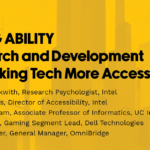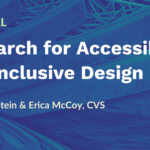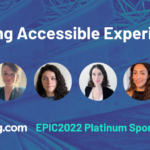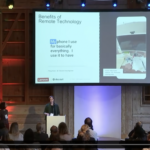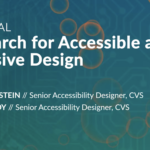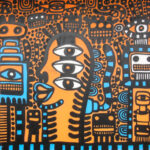
"An ethnographic lens influences us to define ability and disability in a way that is maximally inclusive...many different abilities are present in our world, and each deserves to be taken as its own reality and respected as such."
—RICHARD BECKWITH (Research Psychologist, Intelligent Systems Research Lab) & SUSAN FAULKNER, (Research Director, Research and Experience Definition), Intel Corporation
EPIC Members Richard Beckwith and Susan Faulkner (Intel) have assembled a panel of luminaries in accessible tech research, design, and engineering for our January 26 event, Seeing Ability: Research and Development for Making Tech More Accessible. In anticipation, we asked them a few questions about their approach to accessibility and key first steps all of us can take to do more inclusive work.
How do you define ability and accessibility? How does an ethnographic lens influence your definitions?
Ability has to do with what an individual is capable of perceiving or physically doing with their body; accessibility has to do with...



